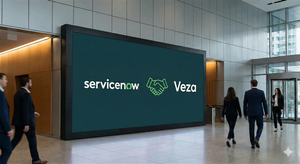Outdated legacy technologies costing organizations the ability to innovate, money, time – and, potentially, even customers
Technical debt and an over-reliance on outdated legacy systems and applications is blocking enterprise adoption of more innovative technologies like artificial intelligence (AI), according to new research from Pegasystems Inc. (NASDAQ: PEGA), the Enterprise Transformation Company™. The study, conducted with research firm Savanta, was unveiled at PegaWorld®, the company’s annual conference in Las Vegas. It surveyed more than 500 IT decision makers across enterprises worldwide on the challenges caused by technical debt and the progress in modernizing legacy technology.
The study found that two in three (68%) respondents say legacy systems and applications are preventing their organization from fully embracing more modern technologies. An overwhelming majority (88%) are also concerned about how their technical debt impacts their ability to keep pace with more agile, innovative competitors – with one in three (29%) indicating either ‘clear’ or ‘significant’ concern. More than half (57%) even acknowledge their reliance on legacy systems ‘likely’ or ‘highly likely’ causes customers to defect due to the resulting poor experiences.
Other findings from the research include:
- Legacy dependency: Almost half (48%) say they can’t stop supporting their legacy applications – despite wanting to – because the systems are still business critical. Almost half (47%) say their oldest legacy application is between 11-20 years old, while more than one in ten (16%) run apps between 21-30 years old.
- Legacy Ineffectiveness: Two thirds (68%) of respondents say legacy systems are preventing their organization from operating as effectively as possible, citing time spent on maintenance (44%), the siloed nature of disconnected systems, and the cost of maintenance (both 37%) as the leading contributing factors. Just 7% feel legacy applications caused no problems for their business whatsoever.
- The customer does not always come first: Three quarters (74%) of respondents agree their business prioritizes investments that improve profitability instead of ways to improve customer experience, such as technologies to help modernize legacy applications. This echoes research conducted by Pega earlier this year among consumers, 69% of whom felt businesses were prioritizing profits over positive customer experiences in their IT investments. It could also help explain why one in three (32%) say the average resolution time to customer queries has increased between 26-50% in the last 12 months – a direct result of staff running multiple or outdated legacy applications.
Quotes & Commentary
“This study highlights how easy it can be for enterprises to get dragged down by outdated systems that are unwieldy to use and resource-intensive to maintain – perpetuating an organizational culture of waste,” said Don Schuerman, chief technology officer, Pega. “While the bottom-line cost to businesses is significant, the real cost of technical debt is its impact on the experiences that today’s customers both demand and deserve. It’s time for businesses to change their mindset, harness the power of generative AI through innovations like Pega Blueprint™, to enact fast, efficient legacy transformation, and free themselves from the vicious cycle of technical debt…before they lose their customers for good.”
Notes
Pega surveyed more than 500 IT decision makers worldwide on their legacy transformation projects, how they work, and the challenges and opportunities they present. The results included responses from North America, the United Kingdom, France, Australia, and Germany.
Methodology
For all respondents, Pega defined ‘technical debt’ and ‘legacy systems’ as outdated hardware, software, or technology platforms that remain in use due to their critical role in business operations. This is despite challenges such as limited scalability, security vulnerabilities, high maintenance costs, and incompatibility with modern technologies. Technical debt is the implied, often intangible, cost of additional work, or strain using them places upon the business.
Additional Resources
- Unlock rapid enterprise modernization: Pega Blueprint
- More information: Pega Blueprint
- Demo video: See Pega Blueprint in action
- Other background: Pega Gen AI and Pega Infinity
About Pegasystems
Pega is The Enterprise Transformation Company that helps organizations Build for Change® with enterprise AI decisioning and workflow automation. Many of the world’s most influential businesses rely on our platform to solve their most pressing challenges, from personalizing engagement to automating service to streamlining operations. Since 1983, we’ve built our scalable and flexible architecture to help enterprises meet today’s customer demands while continuously transforming for tomorrow. For more information on Pega (NASDAQ: PEGA), visit www.pega.com
All trademarks are the property of their respective owners.
View source version on businesswire.com: https://www.businesswire.com/news/home/20250602034043/en/
Contacts
Press:
Jon Brigden
Pegasystems
jon.brigden@pega.com





